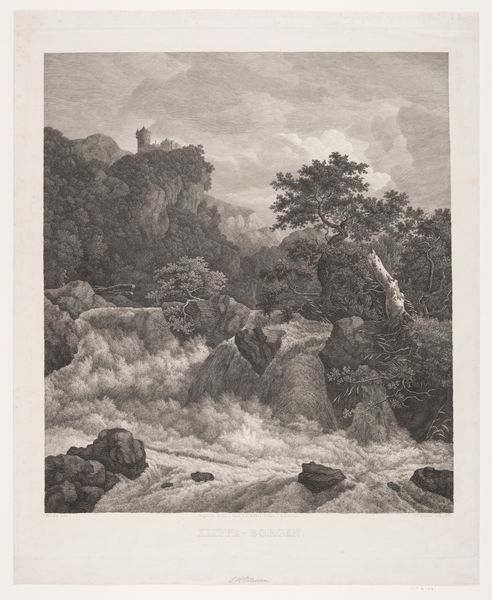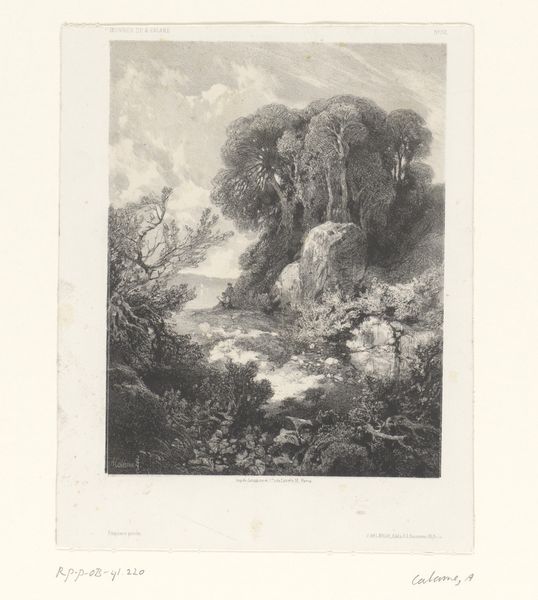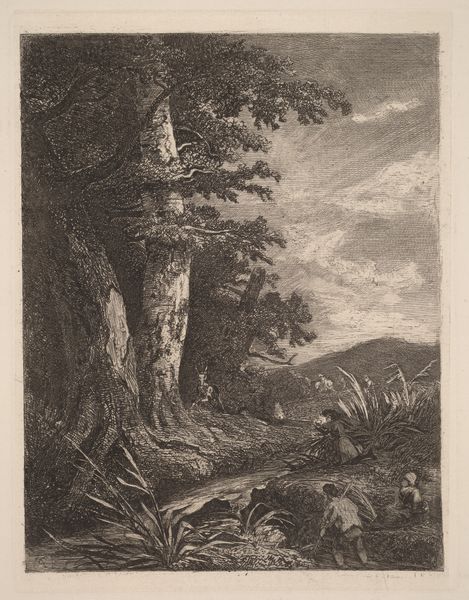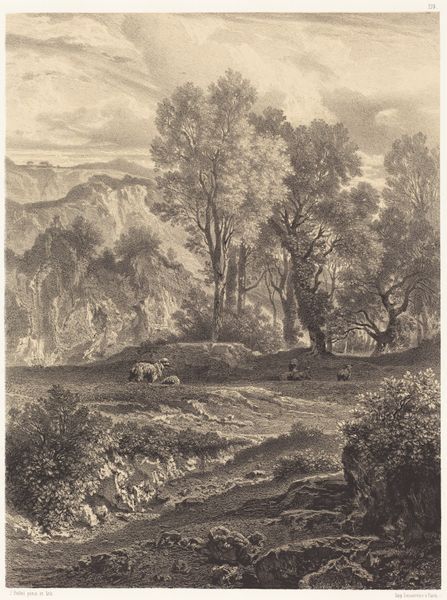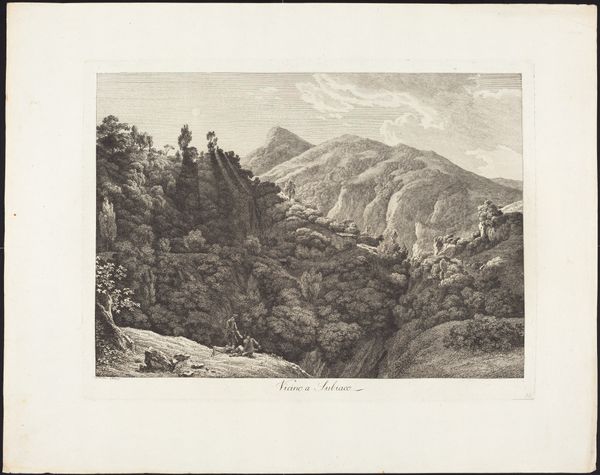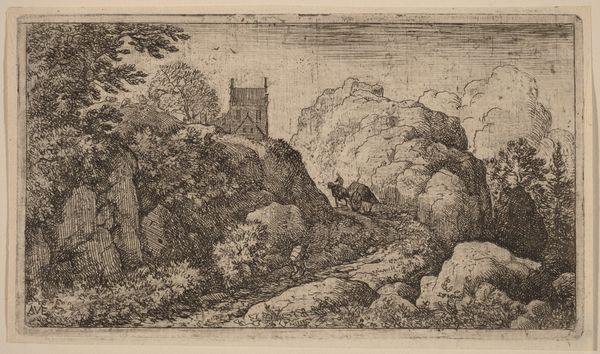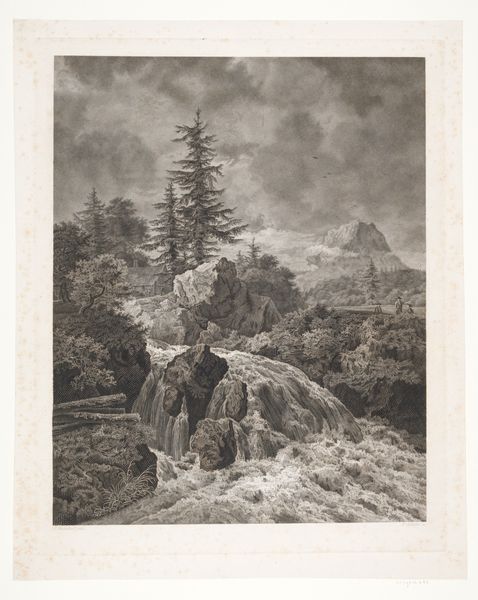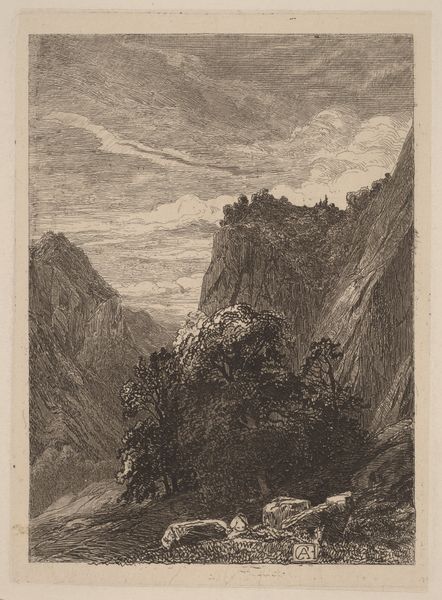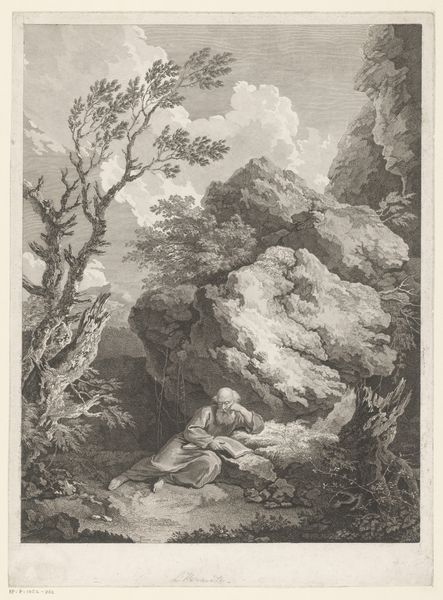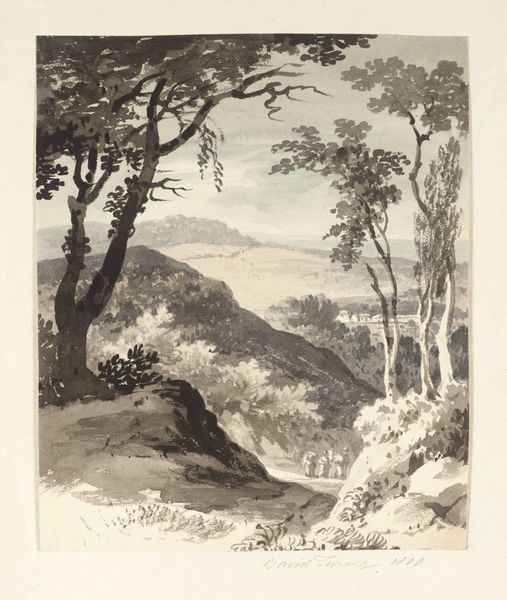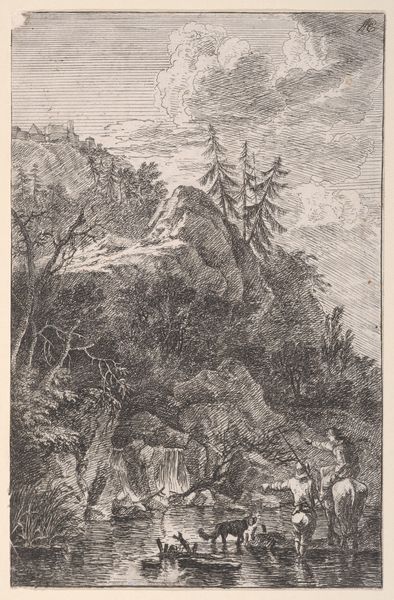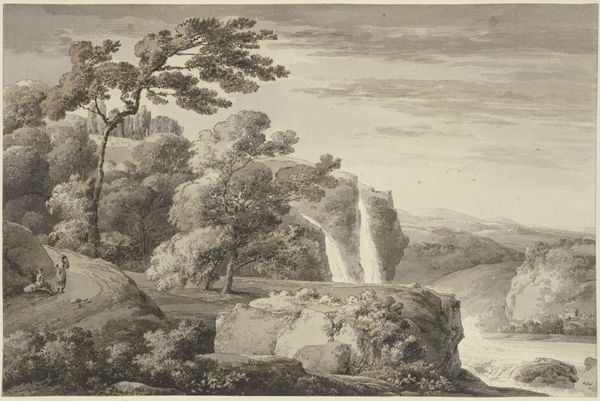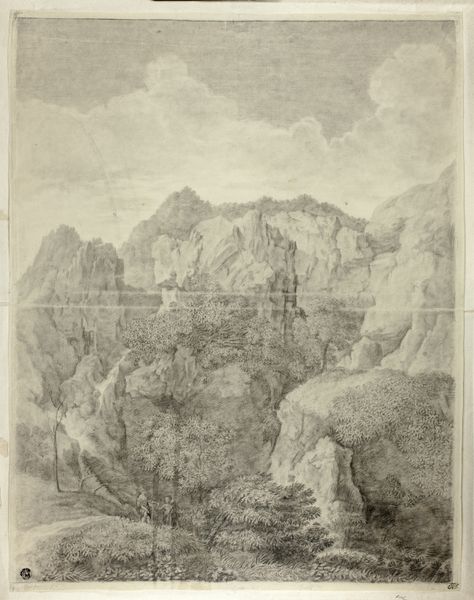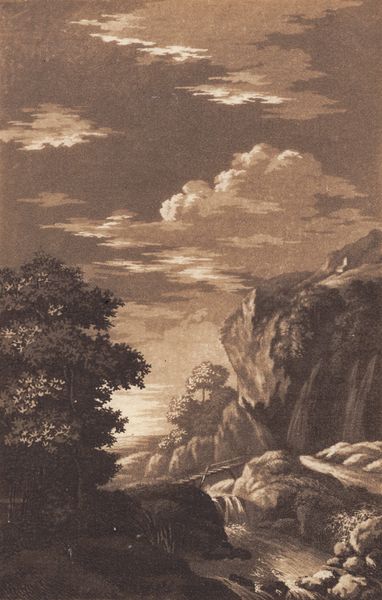
Dimensions: 600 mm (height) x 515 mm (width) (plademaal)
Curator: Gazing at this, I’m immediately struck by its sheer energy. It's like the artist has bottled the raw force of nature. Does it evoke that for you too? Editor: Absolutely! It's "Landskab med vandfald og en klippeborg," or "Landscape with Waterfall and a Rock Castle," made in 1856. An engraving, likely on paper. And talk about romantic drama! I can almost hear the roar of the waterfall and the wind whistling through the trees. Curator: Precisely! This piece falls squarely within the Romantic tradition, a movement that prioritized emotion, the sublime, and the power of nature. Landscape painting became a powerful way for artists to explore those themes, and for viewers to connect with them, within the specific historical contexts in which these works are consumed. Editor: It’s interesting how they've positioned that castle – almost a fragile counterpoint to the overwhelming power of the falls. Like a reminder of humanity’s fleeting presence against the eternal backdrop of nature. The high vantage point is certainly cinematic. Curator: Indeed. Castles themselves were potent symbols in Romantic art. Often representing history, legacy, or even decay. The scale contrast underscores humanity’s precarious relationship with the natural world, emphasizing nature’s dominance. It would make a statement about social progress for emerging art audiences. Editor: It really highlights our ambitions! Even that sense of sublime awe is bittersweet… I guess the mood of that era was an appropriate stage to explore these big ideas. Are there particular contexts that amplify what you see? Curator: Certainly. Considering its time, in the 1850s, with increasing urbanization and industrialization, landscapes like these provided not only aesthetic enjoyment, but an imagined escape. As cultural institutions grew in influence, these pieces were curated to offer a glimpse into the historic struggles and moral ambiguities within modernity. Editor: I suppose that’s why art like this continues to move us today; they distill the push and pull that surrounds humanity. Curator: Yes, and with each viewing within these hallowed halls, new discussions arise. Editor: A timely reminder that nothing stands still.
Comments
No comments
Be the first to comment and join the conversation on the ultimate creative platform.
